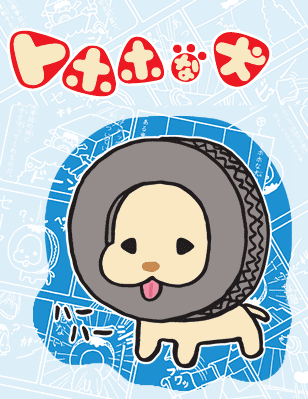
Tohohona Inu
Japanese Name: トホホな犬 Literal Translation: Failure1 Dog Released: January 2006 Original Japanese: WWW Tohohona Inu, a new character produced by San-X and Shogakukan's Choukyou Kataggu, for the Year of the Dog in 2006 is released nationwide!!! There is a loveable serialization inside Shogakukan's elementary school magazine.2 

The size of the tire stuck to Tohohona Inu is smaller than a kei car3.(※1) We still don't know what kind of tire it is. It seems that it is hard to walk with the tire stuck on but he can roll to move with this tire! This means monocycle!?(※2) サンエックスと小学館の超強カタッグが生み出したニューキャラクタートホホな犬が2006年犬年についに全国発売!!!小学館の学年誌でも大好き評連載中です。 トホホな犬がはめているタイヤの大きさは、軽自動車のタイヤより小さい。(※1) なんのタイヤだったのかはまだ分かっていない。タイヤなんてはめてて歩きにくそうだけど、そのタイヤで転がって移動する事が出来る!ある意味一輪車!?(※2) Characters
Images 
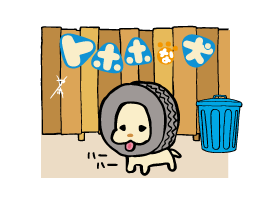
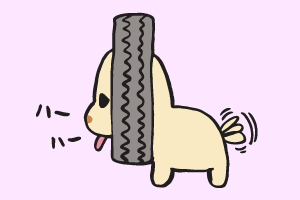
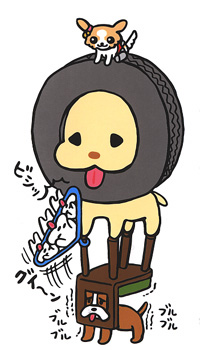

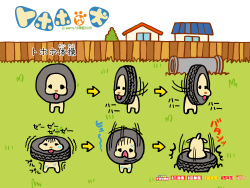
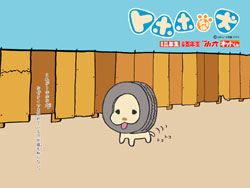
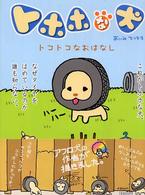


|
What a silly dog to have a tire on his head! I've always wondered the story of this crazy guy and now we know...
Japanese Culture 1. In Japanese, "tohoho" means failure. "My tohoho" is nobody's fault but mine. But in another aspect it's an adventure, very reckless but curious one. My mind says I would fail, but my curiosity says if it goes well, it must be fun...And thus I do it, and fail. There's no anger, no humiliation about this failure. Just some kind of understanding, and a little bit sorrow. That's Tohoho. Usage: "That's a nice tohoho of yours!" or "A lovable tohoho chap!" Source: Tohoho 2. Choukyou Kataggu (超強カタッグ) is the name of a publication.  3. Kei car, K-car, or keijidōsha (軽自動車, "light automobile"), is a Japanese category of small vehicles, including passenger cars, vans, and pickup trucks. Wikipedia: Kei car 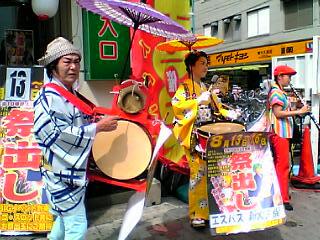 4. Chindonya (チンドン屋), also called Japanese marching band, and in the old times also called tōzaiya (東西屋) or hiromeya (広目屋 or 披露目屋) are a type of elaborately costumed street musicians in Japan that advertised with loud noise and music for shops and other establishments. The performers advertised the opening of new stores and other venues, or promoted special events such as price discounts. Nowadays, chindon'yas are rare in Japan and you don't see too much of them these days. The word consists of Japanese sound symbolism chin and don to describe the instruments, and the -ya suffix which roughly equates to the English "-er" suffix in this context. Wikipedia: Chindonya Translation Notes a. "Hidari" means "left," "dai" means "big," and "migi" means "right." |
Updates
May 4, 2012 - Thank you to everyone who has been visiting. I plan to update weekly now so be sure to check back every Monday for a new crazy cute character! Requests are very welcome and so far Mamegoma, Rilakkuma, and Nyan Nyan Nyanko have been requested and are in the process.... please be patient as there is a lot of information about them! Please keep spreading the word about the cuteness of San-X!!!
Monday, December 31, 2012
Tohohona Inu
Subscribe to:
Post Comments (Atom)

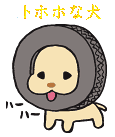




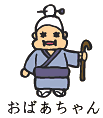

No comments:
Post a Comment